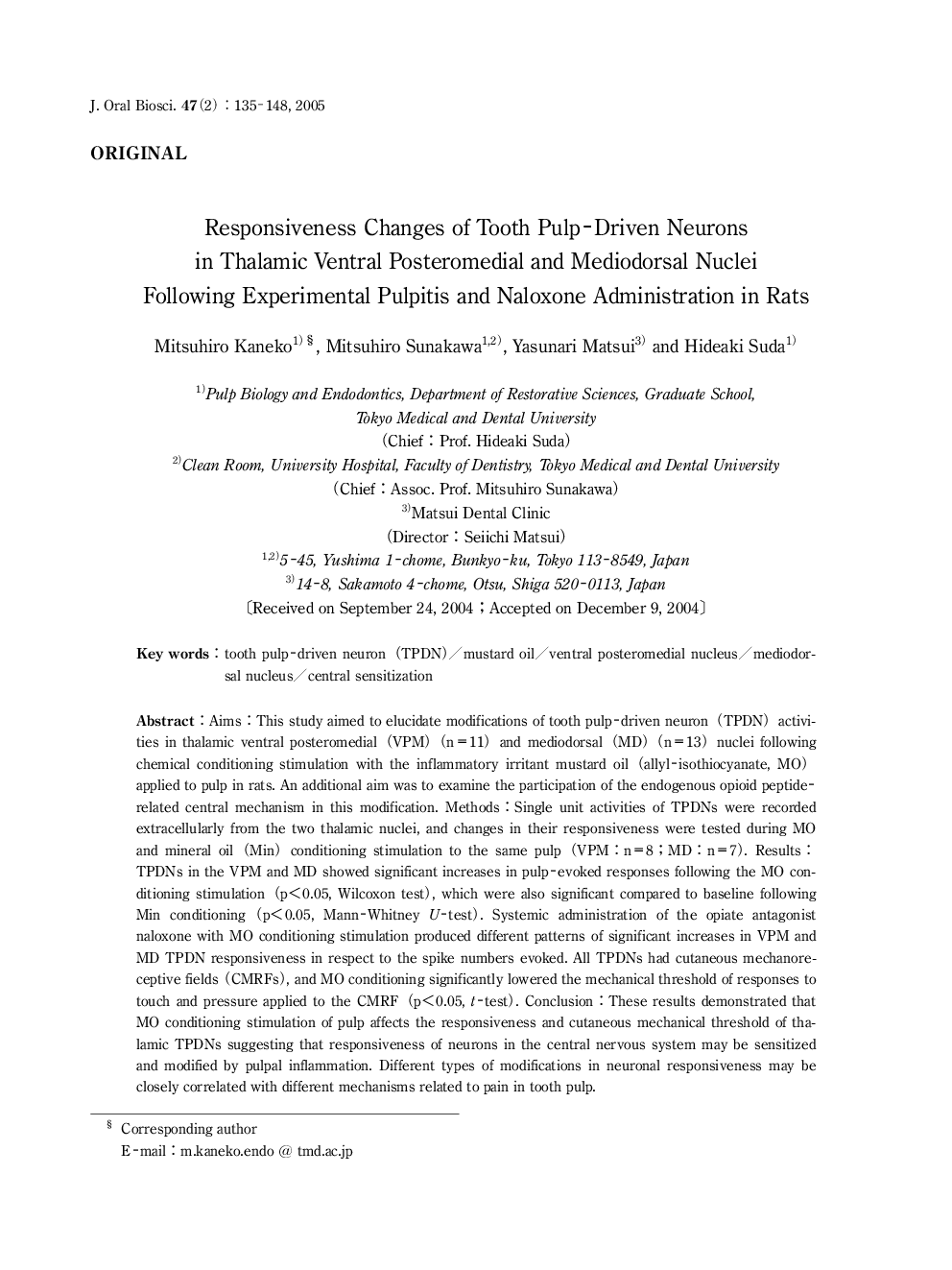| Article ID | Journal | Published Year | Pages | File Type |
|---|---|---|---|---|
| 9103370 | Journal of Oral Biosciences | 2005 | 14 Pages |
Abstract
Aims: This study aimed to elucidate modifications of tooth pulp-driven neuron (TPDN) activities in thalamic ventral posteromedial (VPM) (n = 11) and mediodorsal (MD) (n = 13) nuclei following chemical conditioning stimulation with the inflammatory irritant mustard oil (allyl-isothiocyanate, MO) applied to pulp in rats. An additional aim was to examine the participation of the endogenous opioid peptiderelated central mechanism in this modification. Methods: Single unit activities of TPDNs were recorded extracellularly from the two thalamic nuclei, and changes in their responsiveness were tested during MO and mineral oil (Min) conditioning stimulation to the same pulp (VPM: n = 8 ; MD: n = 7). Results TPDNs in the VPM and MD showed significant increases in pulp-evoked responses following the MO conditioning stimulation (p<0.05, Wilcoxon test), which were also significant compared to baseline following Min conditioning (p<0.05, Mann-Whitney U-test). Systemic administration of the opiate antagonist naloxone with MO conditioning stimulation produced different patterns of significant increases in VPM and MD TPDN responsiveness in respect to the spike numbers evoked. All TPDNs had cutaneous mechanoreceptive fields (CMRFs), and MO conditioning significantly lowered the mechanical threshold of responses to touch and pressure applied to the CMRF (p<0.05, t-test). Conclusion: These results demonstrated that MO conditioning stimulation of pulp affects the responsiveness and cutaneous mechanical threshold of thalamic TPDNs suggesting that responsiveness of neurons in the central nervous system may be sensitized and modified by pulpal inflammation. Different types of modifications in neuronal responsiveness may be closely correlated with different mechanisms related to pain in tooth pulp.
Related Topics
Life Sciences
Biochemistry, Genetics and Molecular Biology
Clinical Biochemistry
Authors
Mitsuhiro Kaneko, Mitsuhiro Sunakawa, Yasunari Matsui, Hideaki Suda,
